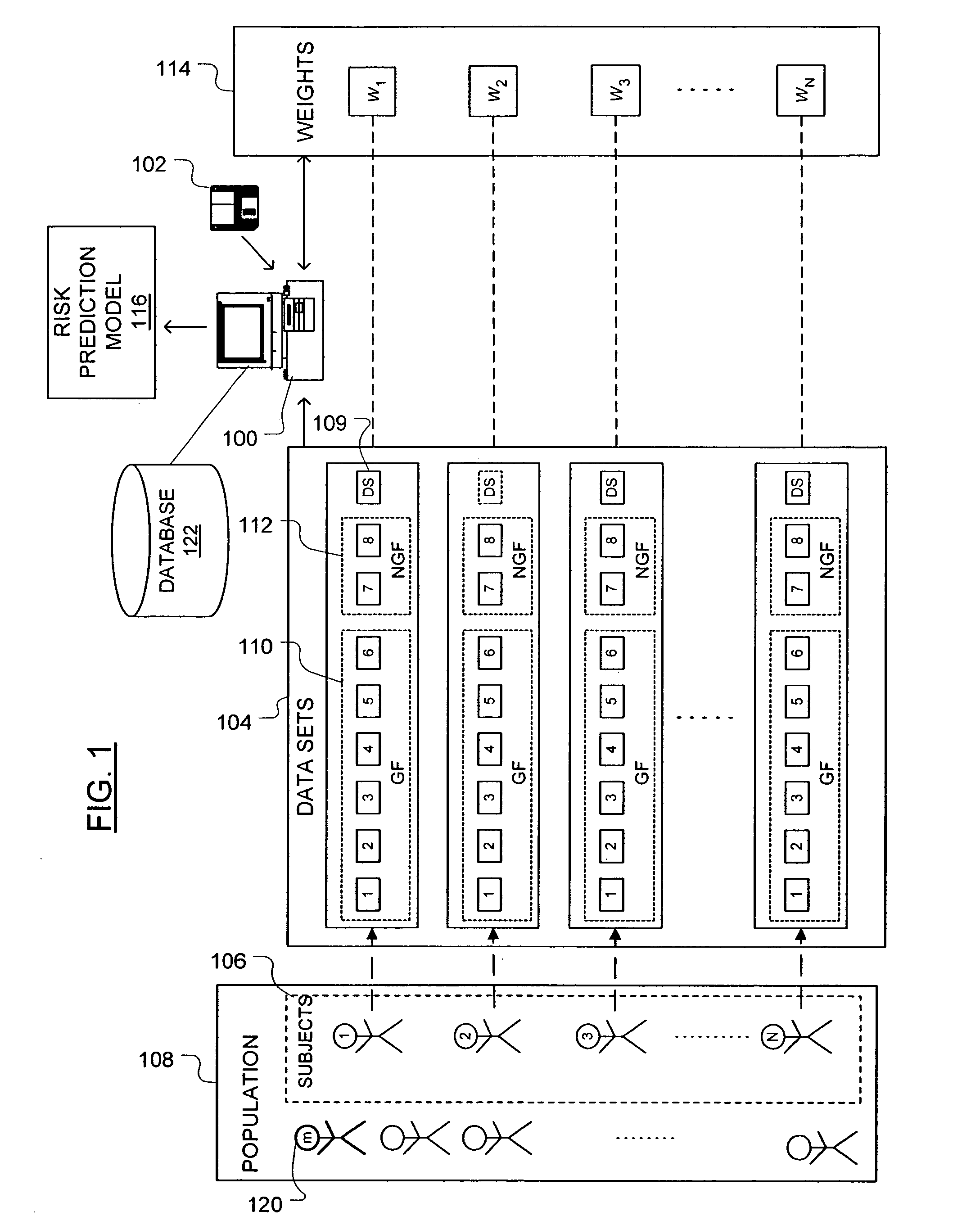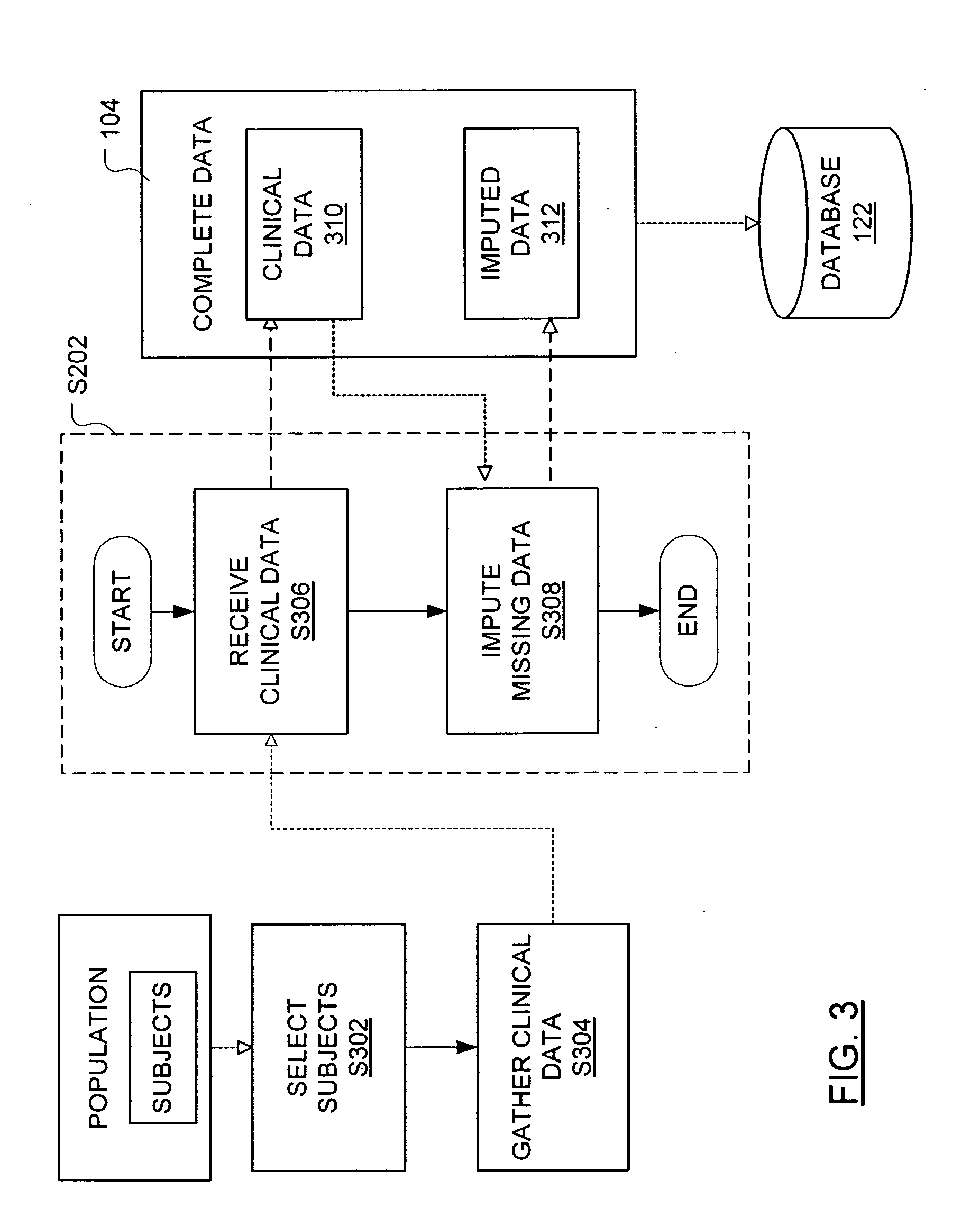Method for assessing risk of diseases with multiple contributing factors
a risk factor and disease technology, applied in the field of assessing disease risks, can solve the problems of difficult to unravel the interplay between, incorrect prediction, and high risk of disease for individuals
- Summary
- Abstract
- Description
- Claims
- Application Information
AI Technical Summary
Benefits of technology
Problems solved by technology
Method used
Image
Examples
Embodiment Construction
FIG. 1 graphically illustrates formation of a risk prediction model116, in manners exemplary of embodiments of the present invention. Example risk prediction model 116 is formed to predict the likelihood that a particular patient 120 that is a member of a population 108 will develop a particular disease of interest. As will become apparent, risk prediction model 116 may be effective in predicting risk of a number of patients within population 108.
As illustrated, example risk prediction model is determined, using a general purpose computing device 100, executing software exemplary of embodiments of the present invention. As such, computing device 100 includes a processor and processor readable memory, for storing processor executable instructions adapting computing device 100 to function in manners exemplary of embodiments of the present invention. The memory may be any suitable combination of dynamic and persistent storage memory, and may therefore include random-access memory; rea...
PUM
| Property | Measurement | Unit |
|---|---|---|
| Weight | aaaaa | aaaaa |
| Time | aaaaa | aaaaa |
| Level | aaaaa | aaaaa |
Abstract
Description
Claims
Application Information
 Login to View More
Login to View More - R&D
- Intellectual Property
- Life Sciences
- Materials
- Tech Scout
- Unparalleled Data Quality
- Higher Quality Content
- 60% Fewer Hallucinations
Browse by: Latest US Patents, China's latest patents, Technical Efficacy Thesaurus, Application Domain, Technology Topic, Popular Technical Reports.
© 2025 PatSnap. All rights reserved.Legal|Privacy policy|Modern Slavery Act Transparency Statement|Sitemap|About US| Contact US: help@patsnap.com



